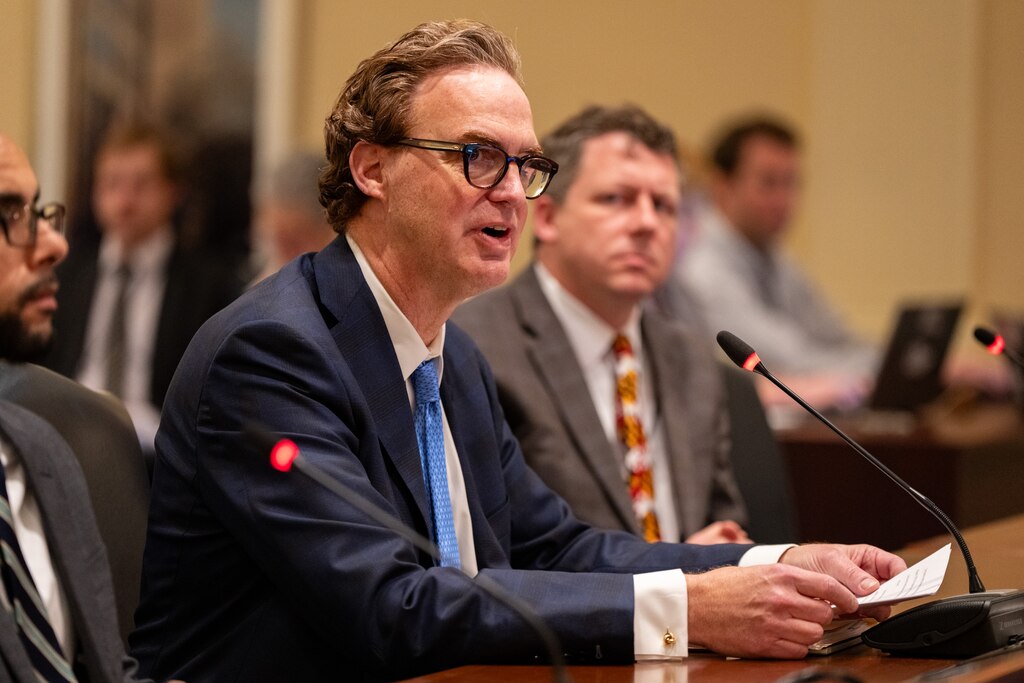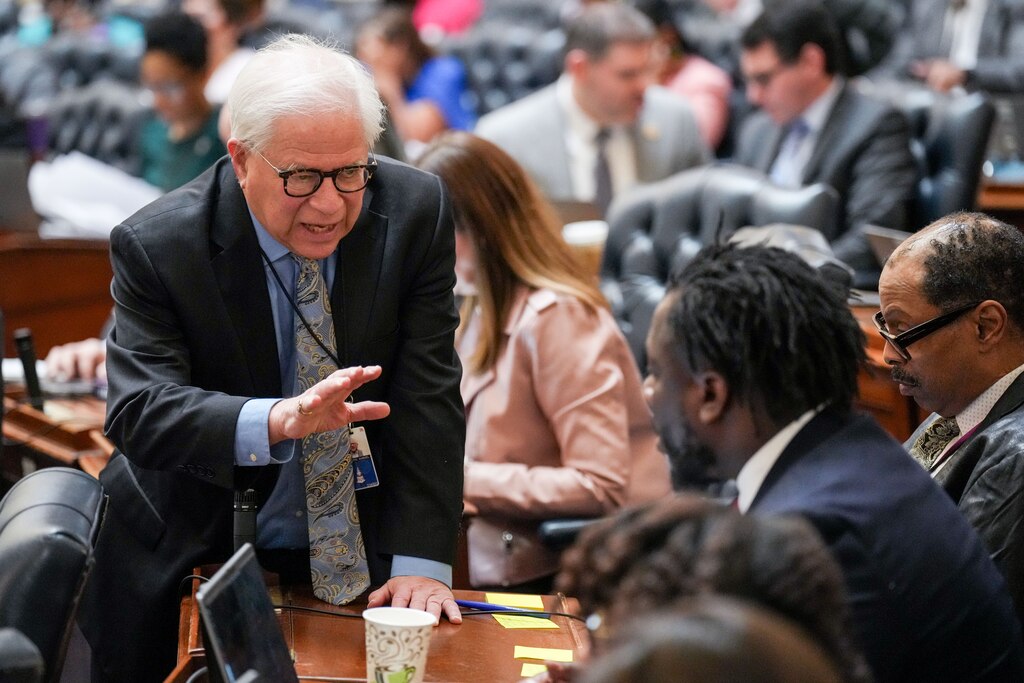With a scribble of his pen and a smile for the cameras on Thursday, Maryland Gov. Wes Moore pushed an ambitious plan to remake Pimlico Race Course.
Moore signed a new law that enables the state to take ownership of the historic thoroughbred racetrack in Baltimore, spend hundreds of millions of dollars renovating it and eventually running races there. It’s a big bet to rescue a failing but economically important industry.
After decades of uncertainty about the future of Pimlico and the thoroughbred industry, proponents of the plan believe that this will succeed where past plans have failed.
“One of the very first questions I get is ‘It all sounds great, but we’ve been told this before. Is it going to happen this time?’ ” said Greg Cross, who chairs the Maryland Thoroughbred Racetrack Operating Authority, which developed the plan. “We really have a partnership for developing it. We’re working with the community. ... It’s not just a hope — this is actually happening this time.”
The Baltimore Banner thanks its sponsors. Become one.
Thoroughbred racing has repeatedly found itself at a crossroads, with the company that owns the state’s two main tracks complaining of losing money at aging, outdated facilities. After fits and starts and aborted plans, lawmakers created a new state authority last year to study the industry and recommend a path forward.
Their plan: Have the state take ownership of Pimlico Race Course, as well as assume responsibility for running thoroughbred races there. Renovations would be financed by state-issued bonds that would be paid back using existing racing subsidies from the casino industry, as well as state lottery proceeds.
The Stronach Group, also known as 1/ST Racing, which currently owns Pimlico and Laurel Park in Anne Arundel County, gets to keep the Laurel property, though racing will be phased out there. Stronach representatives were not at Thursday’s bill signing ceremony.
The plan, dubbed “Pimlico Plus,” won approval from state lawmakers this year, though some cast their votes reluctantly. With the passage of legislation and now the governor’s signature, the Pimlico Plus plan is one step closer to fruition.

The next step is for the state Board of Public Works to sign off on a series of contracts related to the transfer of the property. Comprised of the governor, treasurer and comptroller, all Democrats, the board is expected to vote next Wednesday, just days before the 149th Preakness Stakes.
The Baltimore Banner thanks its sponsors. Become one.
Then the transfer of the Pimlico property to the state would take place this summer. That will set off a determined pace of designing plans, demolishing buildings at the track and getting renovations going. The Maryland Stadium Authority will manage the project, working closely with the Maryland Thoroughbred Racetrack Operating Authority.
A stadium authority official cautioned members of the racetrack authority recently: “We need decisions to be made quickly.”
If all goes to plan, the Preakness Stakes will still be held at Pimlico in 2025 — the 150th edition of the race — even as some demolition is already under way. Then work will begin in earnest after the 2025 race. The Preakness would relocate to Laurel Park during the height of construction in 2026 and return to Pimlico in 2027.
House Speaker Adrienne A. Jones, a Baltimore County Democrat, highlighted the Pimlico legislation among the 275 bills that she, the governor and the Senate president signed into law Thursday, saying it will “preserve the future of thoroughbred horse racing in Maryland.”
“Because of this bill, we have a path forward to continue running the Preakness in Maryland and renovate Pimlico Race Course,” said Jones. “The bill will create lasting economic benefits to the state and the Baltimore region.”
The Baltimore Banner thanks its sponsors. Become one.

Delegates Malcolm Ruff and Sandy Rosenberg, Democrats whose district includes the track, posed for pictures as pens were put to paper on the bill. They expressed optimism that the transfer of ownership and renovation will benefit the surrounding community.
The state is pouring millions of dollars into housing and community development alongside the renovations to the track itself. And the renovated track is proposed to include an event center, parking garage and other amenities.
“Our community in Park Heights has been ignored. It has unfortunately declined over many, many decades,” Ruff said. “I think this is the comeback for Park Heights.”
And while politicians are optimistic about the Pimlico plans, some in the industry are in a believe-it-when-we-see-it frame of mind.
“It’s nervous anticipation because there’s so much that has to happen,” said Alan Foreman, representing the Maryland Thoroughbred Horsemen’s Association. “Until the wrecking ball hits Pimlico, and we actually start moving forward, I don’t think the reality has quite set in yet.”




Comments
Welcome to The Banner's subscriber-only commenting community. Please review our community guidelines.